15 Chilling Myths About Cruise Ship Buffets That Are 100 Percent True
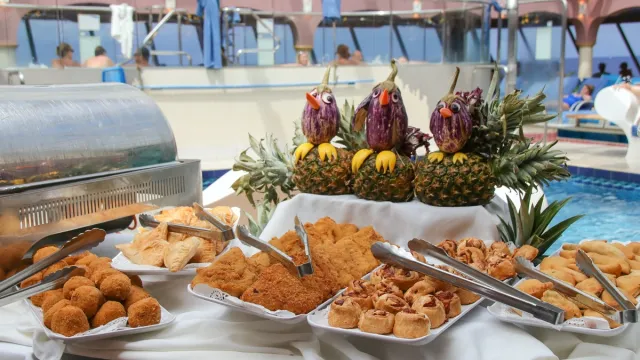
Cruising is all about overindulging, whether it’s drinking, gambling, or eating. And some mega ships feed 6,000 passengers and 2,200 crew—many of whom will dine at the ship’s cafeteria. While these all-you-can-eat adventures may sound delicious (who wouldn’t want unlimited ice cream?), you should seriously stay away from the buffet. In fact, one infectious disease specialist told VICE that cruise ship buffets can be “cesspools for bacteria and viruses.” Yikes!
The truth is, at any buffet, you’re exposed to the germs of every person touching the food, the utensils, and the self-serve machines. To avoid picking up some nasty bugs, here are a few things to watch out for as you set sail.
1
Their hand-washing stations are rarely used.

Because it’s so easy for illnesses to spread on a cruise ship, most lines strongly encourage passengers to frequently wash their hands, especially before meals. Often, staff members are posted in front of dining areas, squirting sanitizer into everyone’s palms before allowing them to enter. Some newer ships have also introduced hand-washing stations before the buffets. However, many people simply walk right by, and who knows when they last used a bar of soap.
2
They make you gain weight.
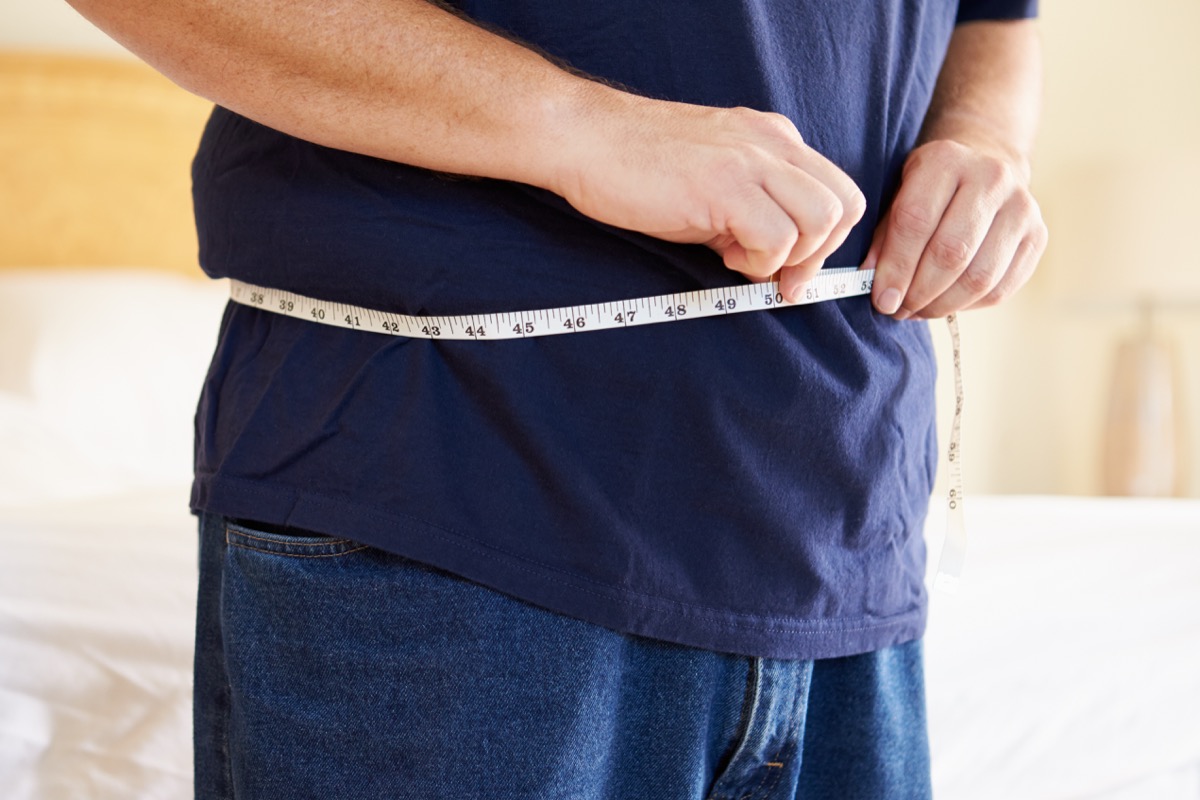
True fact: Passengers put on an average of seven pounds during a one-week cruise. Eating at the ship buffet—where you can go back for unlimited portions over and over again throughout the day—pretty much guarantees you’ll go home heavier than when you first boarded. A recent survey showed that the average cruise passenger gains a pound a day. Want to avoid that extra weight? Limit your dessert intake to dinner only, be mindful of how much alcohol you consume, and take only one plate of food at a time.
3
They often fail sanitation tests.
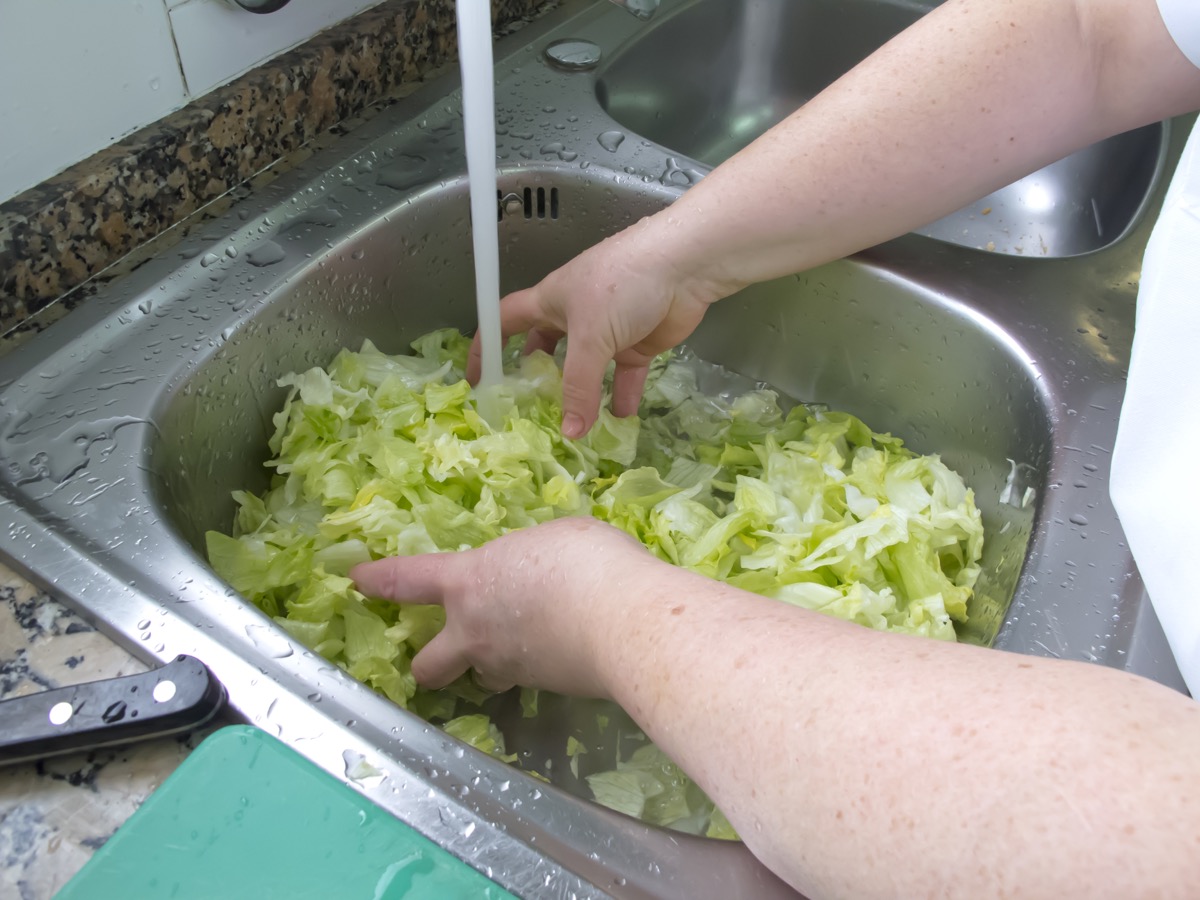
From moldy food to dirty ice dispensers to germy drink taps, CDC food inspectors have seen it all. Some recent discoveries resulting in unsatisfactory reports include uncovered containers of spices “out from under the sneeze shield” and bins of fresh eggs and other food not labelled with a ‘discard by’ date. In 2013, a surprise inspection caught one ship that hid trolleys of perishable food and dirty utensils in employee cabins. Ew!
4
They might be run by sick crew members.
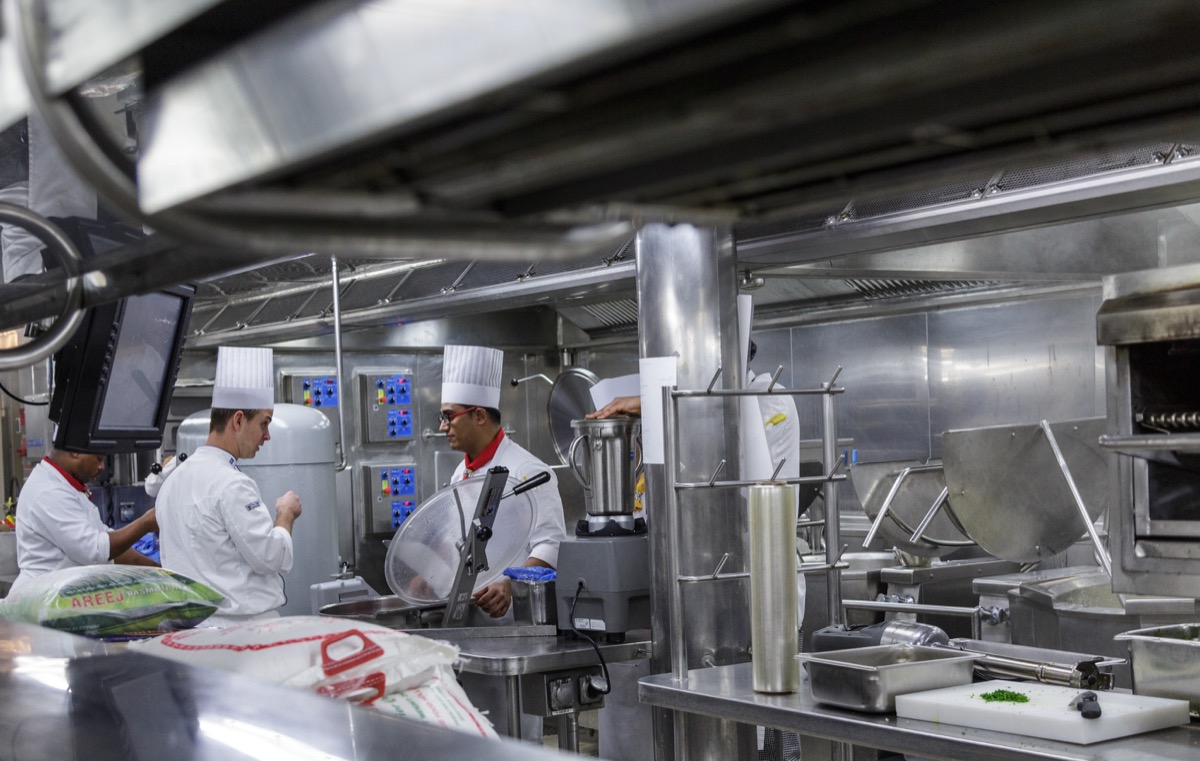
The CDC has super strict rules when it comes to reporting illnesses aboard cruise ships, but sometimes those rules aren’t followed, especially if many crew members are ill due to an outbreak of norovirus, for example.
5
They are easily cross-contaminated.
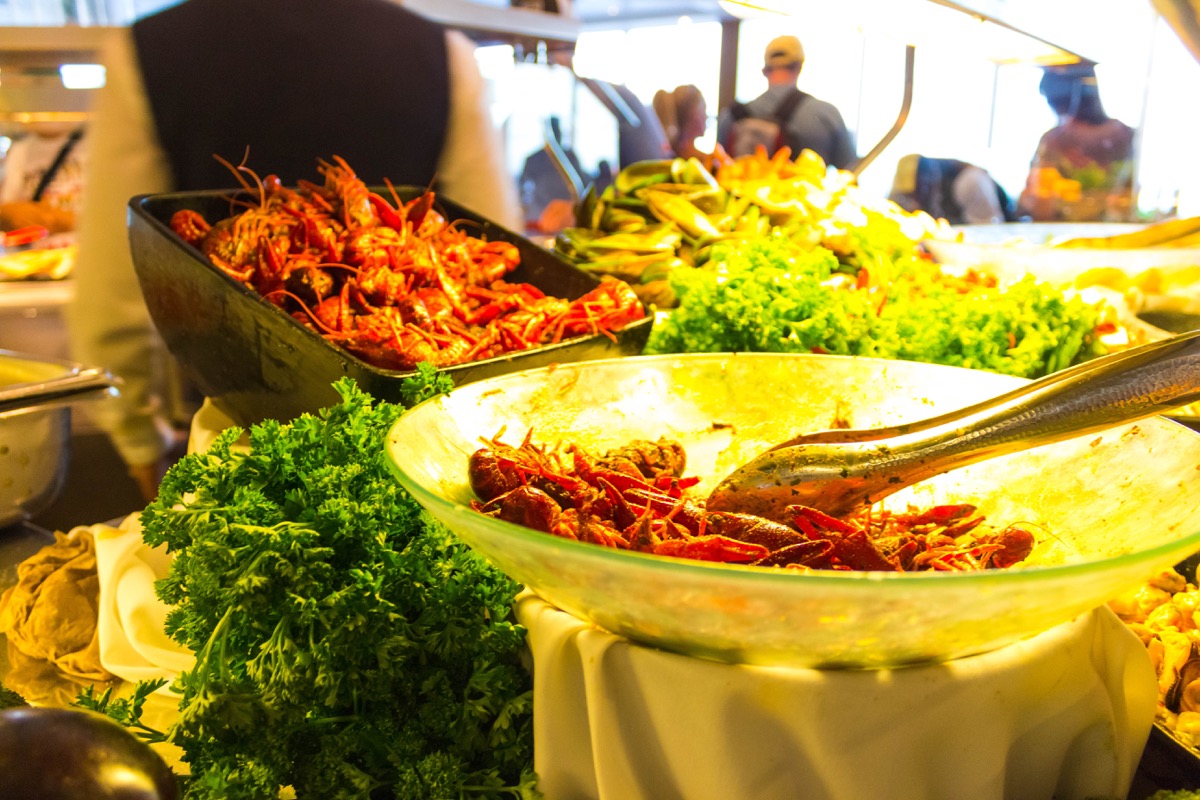
You’re supposed to serve yourself with utensils placed on each platter, but many passengers pick things up with their hands. Worse, they often change their minds and put the food item back, leaving it behind for someone else to unknowingly take. This is a great way to pick up whatever germs that person is harboring.
Other diners drop the serving tongs on the floor and simply put them back onto the platter, or even right over the food itself. Maybe they believe in the five-second rule, but you definitely shouldn’t. If you see this happening, inform the buffet staff so they can replace the tongs with fresh ones. Pro tip: Stay healthy by grabbing an extra napkin before loading up your plate, and use it to hold the serving utensils.
6
Their soft-serve machines are cesspools.
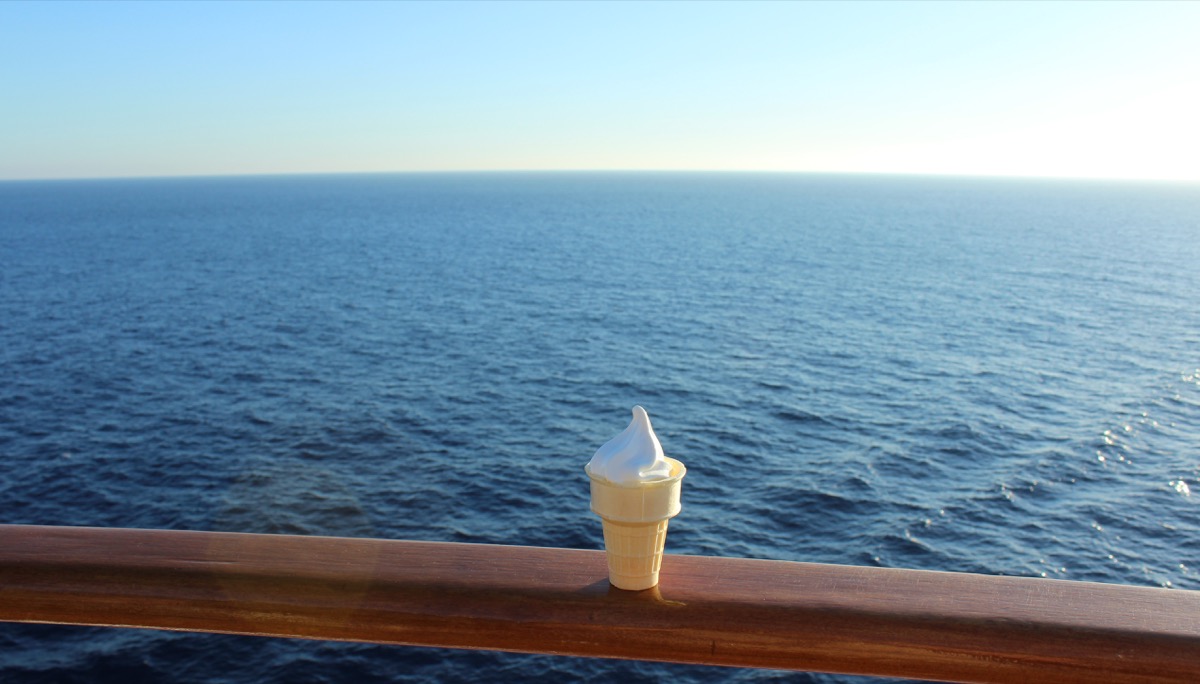
You’ll literally scream for ice cream when you find out what’s hiding in that soft-serve machine. In fact, it’s not really even ice cream or frozen yogurt you’re eating. Most of the time, it’s a pre-made mix that contains sugar, thickeners, fat, and emulsifiers. Yuck! And that handle everyone uses to crank out the frozen stuff? Trust us, you don’t want to touch that before licking your cone.
7
Their pizzas could be a few days old.

Since most ships have stopped hosting midnight buffets, late-night snack options can be slim. Pizza, though, seems to be available around the clock—but be sure you look closely before you slide a slice onto your plate. If the cheese seems hard, that means it’s probably been under the warming lights for quite some time. Don’t be shy about asking for a fresh pie.
8
Their scrambled eggs are fake.
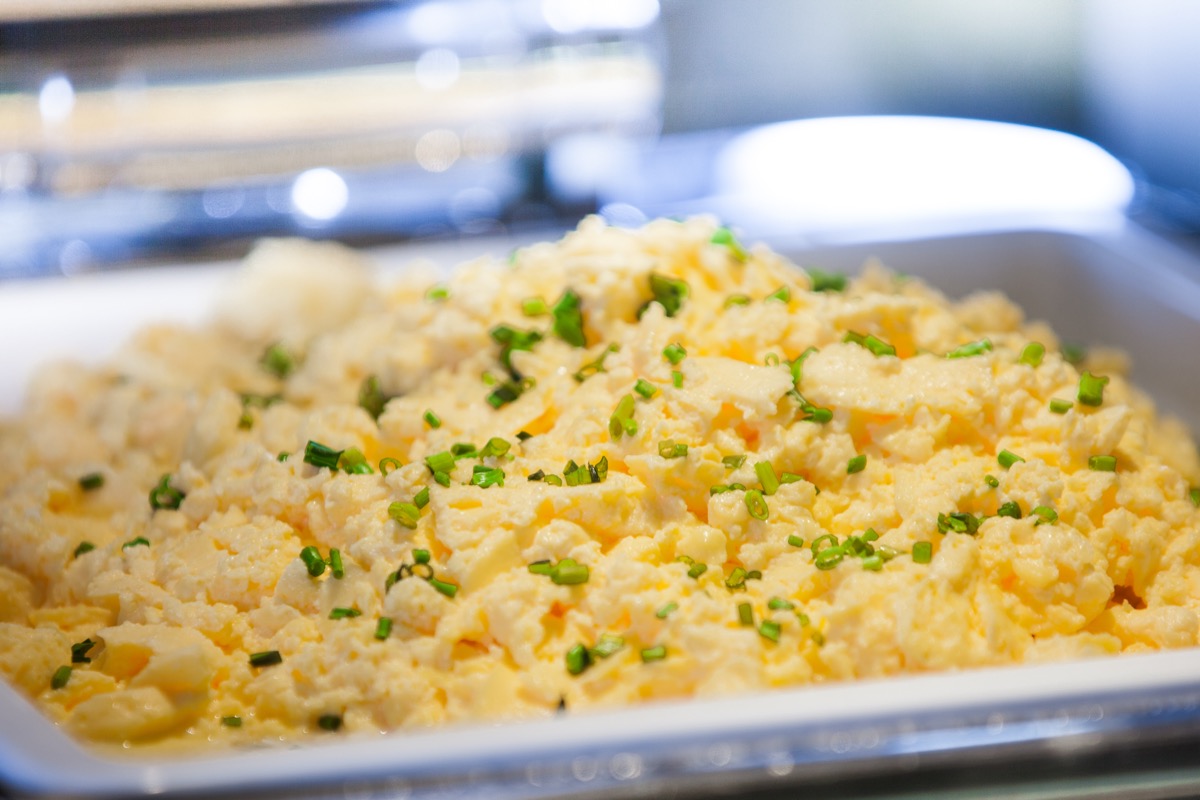
You know those huge tubs of scrambled eggs that are a staple at the breakfast buffet? Many cruise lines make those hours in advance from a powdered mix, which results in a wet or mushy consistency. Avoid that giant vat and head to the made-to-order station instead, where you can get a fresh omelet cooked up right in front of you, with healthy fillings, too.
9
Their sushi rolls aren’t fresh.
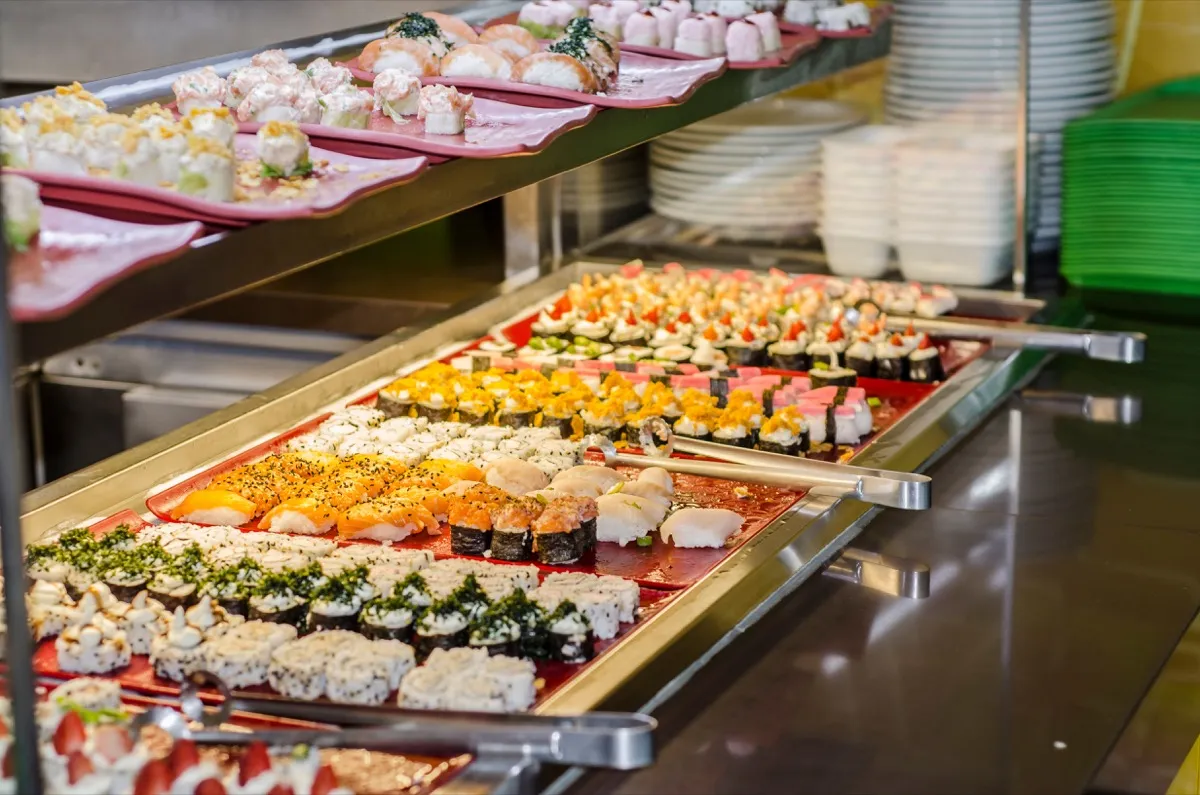
While all cruise lines strive to serve the freshest fare possible, some items may be out at the buffet for a tad too long. Because seafood expires rapidly unless it’s stored in precise temperatures, don’t scoop up a maki that’ll turn your stomach into a kamikaze; opt for something that’s made to order right in front of you.
10
Their condiments are crawling with germs.
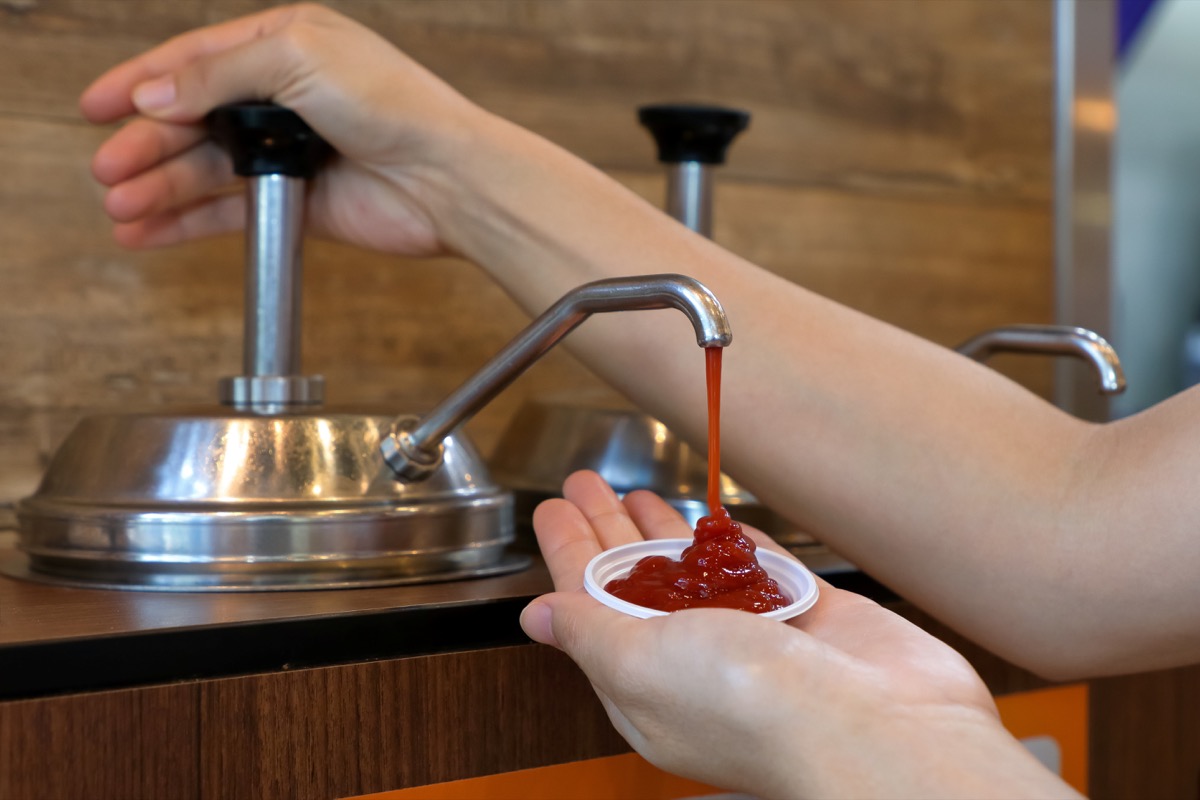
Since thousands of hands—many of them not washed, remember?— touch the ketchup, mustard, and mayo pumps on display at most buffets, you can pretty much guarantee that germs are breeding there big-time. Instead of using those bottles, ask a staff member for individual packets, or use your napkin to squirt out what you need.
11
Their ice machines are polluted.

Frosty drinks are a cruise ship staple. But recent CDC reports found things like “pink and brown debris” and “a reddish purple drip” on parts of the ice machines. So do your own inspection before putting your glass under the dispenser. Pro tip: There’s a reason cruise ships post a warning to never put your water bottle directly under the dispenser. Instead, fill up a clean glass and then pour it into your bottle.
12
Their dishes are dirty.
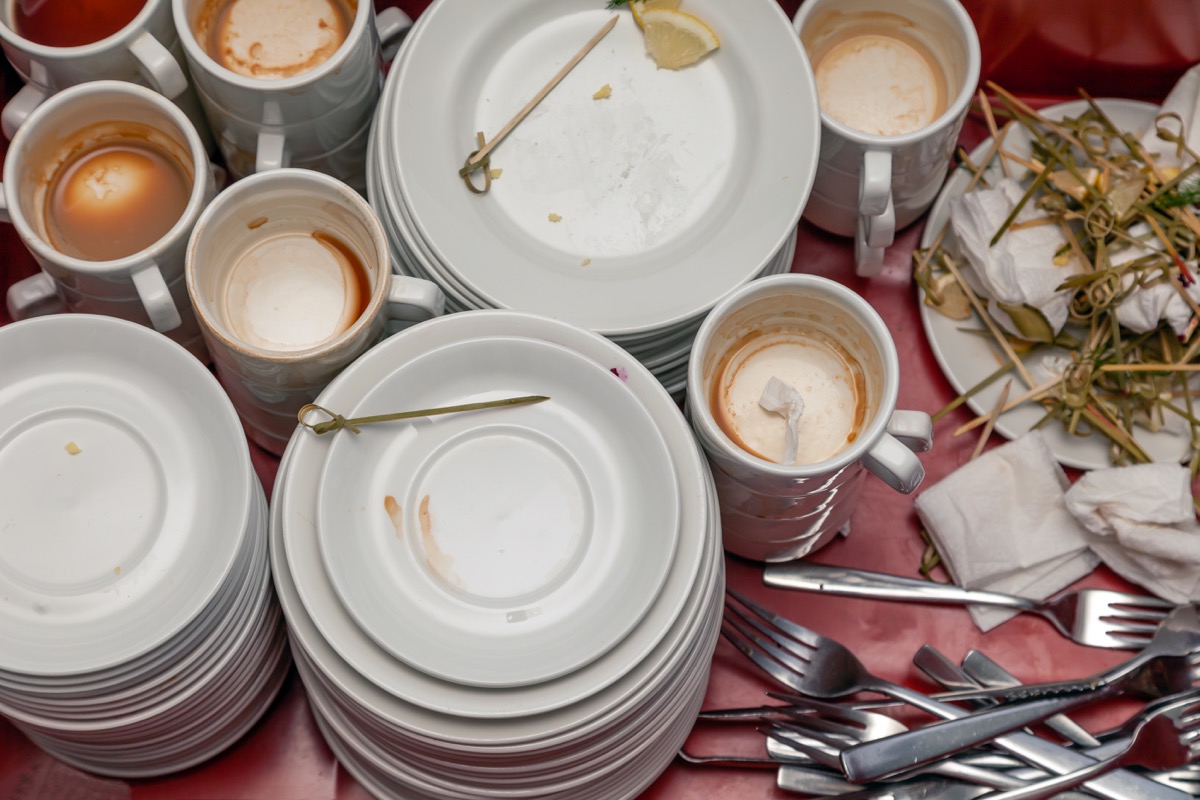
Don’t plop anything on your plate without taking a peek first. CDC reports require an 85 out of 100 in order to pass inspection. Some ships that were inspected in the past few months revealed some yucky things, such as dirty cutlery in the clean utensil tray and flies swarming around the bread items.
13
Their food could make you sick.

It’s tempting to try the mountain of savory snacks stacked along the buffet. But do yourself a favor and skip foods that are most likely to either irritate your stomach if the seas are rough or are more prone to bacteria. For example, cheese can contain salmonella, E. coli, and listeria unless it’s stored properly. Fatty and spicy foods are harder to digest, so if you’re prone to seasickness and your tummy is a tad queasy, opt for things like green apples and saltines.
14
They might not have accurate food labels.

If you have food allergies or intolerances, limit your chances of getting sick by asking a buffet staff about the ingredients before you load up your plate. Most cruise ships are very accommodating to dietary preferences and restrictions, and your best bet is to inform the staff the first time you visit the buffet, so you’ll know where to find gluten-free or peanut-free items.
15
Their lines are insanely long.

Buffet queues are legendary, especially at peak hours. Be strategic and avoid the buffet altogether on embarkation day. Most ships open their dining rooms and other complimentary restaurants, so you don’t spend the first day of your vacation getting hangry while waiting 45 minutes for food. Want to know how else to stay healthy on the road? Check out the 30 Smart Ways to Avoid Getting Sick When You Travel.